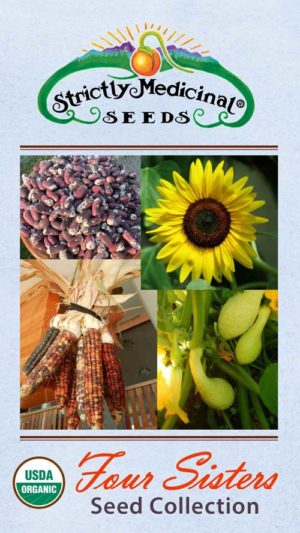Lavender, Munstead (Lavandula angustifolia var. munstead) packet of 50 seeds, organic
$3.95
Family: Mint (Lamiaceae)
Hardy to Zones 4 to 9
This is a Northern-hardy dwarf strain of English Lavender that bears thick racemes of blue flowers to 18 inches. The plant is preferred by landscapers because of its compact form, cold-hardiness, heat tolerance and great longevity. Plants prefer full sun and a dry to mesic, well-drained soil. Commonly grown in open fields or as landscape plants, mellowing the corners and curbs between buildings, driveways and sidewalks. They are tough to the sun but not particularly cold hardy, and should be trimmed back in the fall to prevent large amounts of snow from accumulating on them. Gardeners in northern climes will want to pot them up and bring them in for the winter. Seed is very hard and will benefit from a brisk sandpaper stratification, followed by sowing on sandy soil in the light, kept moist and cool until germination, which can take 4 to 6 weeks. Once the seedlings gain a healthy size, transplant them to quarts, grow them on that way for some weeks, with a sharp eye out for snails and slugs, then transplant again up to gallons, always freeing the roots at transplant and using a rich but fast draining mix. Space plants 2 to 3 feet apart.
50 seeds per packet, Certified Organically Grown
In stock









Question
Niki –
Does this cold hardy lavender offer the same scent as
“standard” lavender? I have a terrible time overwintering lavender & am considering this variety or the Czech variety you sell. Thank you Niki D.
Upvote if this was helpful (0) Downvote if this was not helpful (0) Watch Unwatch Flag for removal
Richo Cech –
Hi Niki, Thanks for contacting. Yes, these give excellent lavender aromatics. One trick that I find helps in overwintering lavenders, besides the obvious full sun against a south wall, is the sand mulch. Very useful! Richo
Upvote if this was helpful (0) Downvote if this was not helpful (0) Flag for removal
cauliflower71 –
Hi Richo, can you please explain the sand mulch?
Upvote if this was helpful (0) Downvote if this was not helpful (0) Flag for removal
Richo Cech –
mulching is where you put some kind of a layer of material around the crown of a plant to dissuade weeds, insects, etc. With organic mulches such as compost or straw, rice hulls, coir, etc. there is an ability to hold in water and increase the organic content and mycorrhizal activity in associated soils, as well. Sand mulch is just laying in a couple inches of sand around the plants, which is a good practice for Mediterranean-derived woody perennials such as sage, rosemary, hyssop, rue and of course the various lavenders as well as some trees like Vitex. The sand assists in drainage around the crown of the plant, to prohibit rot, which can be a problem with these. It dissuades insects and holds in heat. The right kind of sand is a coarse, sharp sand such as builder’s sand, not beach sand. The sharp particles will reflect light back up into the plant, making it grow faster, healthier. Sometimes a sand mulch improves overwintering in colder zones where these plants might not otherwise make it. See “Growing Plant Medicine Vols 1 and 2.” richo
Upvote if this was helpful (0) Downvote if this was not helpful (0) Flag for removal
Sherie –
Oh my goodness! This is the magic tip! Thank you! Adding your book to my cart now!
Upvote if this was helpful (0) Downvote if this was not helpful (0) Flag for removal
Lauren Tarulli –
Almost every single one of these seeds germinated. I trust this company as a small nursery owner and have purchased over 12 packets of these seeds!
Upvote if this was helpful (1) Downvote if this was not helpful (0) Watch Unwatch Flag for removal